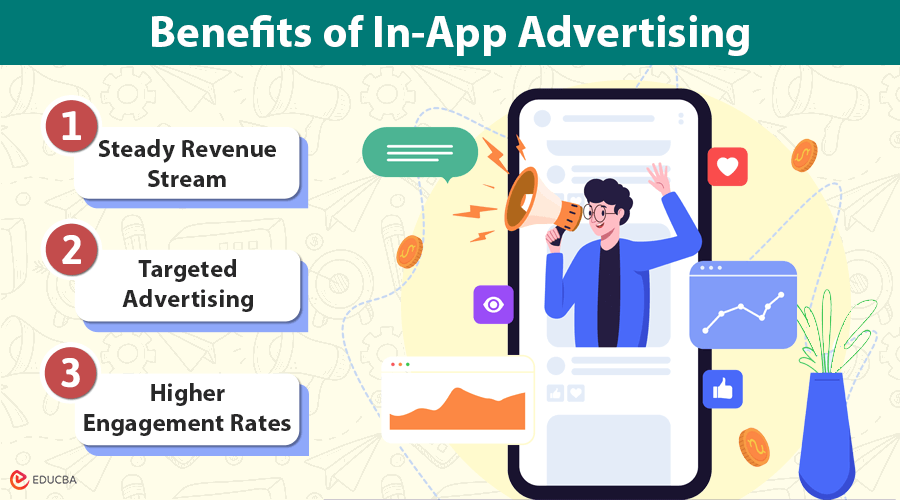Introduction to In-App Advertising
In the digital world, in-app advertising has become one of the most effective ways for app developers to generate revenue while helping advertisers reach highly engaged users. As mobile usage grows, businesses are shifting their focus to in-app ads to boost visibility and drive conversions.
Understanding how in-app advertising works is crucial for app owners who want to maximize revenue without negatively impacting user experience. This article explores essential facts about in-app advertising, its importance, popular ad formats, best placement strategies, monetization techniques, and future trends.
What is In-App Advertising?
In-app advertising is the process of displaying ads within mobile applications to generate revenue. Developers strategically place different ad formats to ensure high visibility without disrupting user experience. Unlike traditional digital ads, in-app ads are optimized for mobile platforms, delivering users more personalized and engaging content.
A well-executed in-app advertising strategy balances revenue generation with user experience. For example, rewarded video ads in gaming apps enhance user engagement while providing monetization opportunities.
Why is In-App Advertising Important?
The rise in mobile app usage has made in-app advertising a dominant force in digital marketing. In 2024, mobile advertising spending worldwide will surpass $400 billion. By 2025, it is expected to grow even further, reaching new record levels.
Benefits of In-App Advertising:
- Steady Revenue Stream: Free-to-download apps can earn revenue through nonintrusive ads.
- Targeted Advertising: Advertisers can reach users based on behavior and preferences.
- Higher Engagement Rates: Users interact with mobile ads more than other digital ads.
For app developers and marketers, in-app advertising is essential for monetization and business growth while keeping apps free for users.
Popular In-App Ad Formats
App developers can select different ad formats depending on their audience and app type. Here are some of the most effective in-app ad formats:
1. Banner Ads
- Place small rectangular ads at the top or bottom of the screen.
- Non-intrusive and commonly used for regular advertisements.
- Ideal for maintaining a seamless user experience.
2. Interstitial Ads
- Full-screen ads that appear between app activities (e.g., between game levels).
- Highly visible and effective but should be limited to prevent user annoyance.
3. Native Ads
- Integrated into the app’s content and design to blend naturally.
- More engaging and subtle, resulting in better conversions.
4. Rewarded Video Ads
- Users watch a short ad to earn in-app rewards.
- Popular in gaming apps and known for boosting user retention.
5. Playable Ads
- Interactive ads let users experience an app before downloading it.
- Highly effective for app installs and engagement.
Best Practices for In-App Ad Placements
Effective ad placement ensures a positive user experience while maximizing ad revenue. Here are some best practices:
- Contextual Relevance: Display ads that align with user interests and app content to enhance engagement.
- Frequency Capping: Limit the number of ads displayed to prevent overwhelming users.
- User Experience First: Integrate ads smoothly into the app’s interface to avoid disrupting usability.
- A/B Testing: Test different ad formats and placements to find the most effective one.
For example, placing ads between game levels results in better engagement than displaying ads during gameplay.
App Monetization Strategies Using In-App Ads
In-app advertising should be part of a broader monetization strategy. Combining ads with other revenue-generating methods can optimize earnings without compromising user satisfaction.
- Freemium Model: Users get basic features for free but need to pay for premium content.
- Subscriptions: Users subscribe monthly or annually for access to exclusive content or features.
- In-app purchases: In-app sales of virtual goods or services.
By balancing these strategies with in-app advertising, app developers can create a diversified and sustainable revenue stream.
Role of Mobile Measurement Partners (MMPs) in In-App Advertising
Mobile Measurement Partners (MMPs) are crucial in optimizing in-app advertising campaigns. These platforms provide valuable insights into ad performance, user behavior, and return on investment (ROI).
Key Benefits of MMPs:
- Track User Engagement: Understand how users interact with ads.
- Optimize Ad Placements: Use data-driven insights to enhance ad effectiveness.
- Prevent Ad Fraud: Detect and eliminate fraudulent activities that impact ad revenue.
Working with MMPs like Apptrove helps app owners fine-tune their ad strategies and achieve better results.
Future Trends in Mobile Advertising
The mobile advertising landscape is constantly evolving. Staying ahead of emerging trends ensures long-term success in in-app advertising.
- Programmatic Advertising: Automated ad buying processes that enhance campaign efficiency.
- Privacy-First Advertising: Ensuring compliance with GDPR and CCPA to safeguard user data.
- Augmented Reality (AR) Ads: Interactive ads that immerse users in an engaging digital experience.
Final Thoughts
In-app advertising remains a powerful revenue model for app developers and businesses. App owners can boost their earnings while keeping users happy by choosing the right ad formats, placing ads effectively, and using smart monetization strategies.
Partnering with MMPs like Apptrove provides data-driven insights that enhance campaign performance and prevent fraud. Additionally, staying updated with the latest mobile advertising trends ensures continued success in a competitive market.
App developers can achieve sustainable growth and long-term profitability by implementing best practices in in-app advertising.
Recommended Articles
We hope this guide helped you understand in-app advertising better. Check out these recommended articles for insights on mobile monetization, ad optimization, and emerging trends in digital marketing.


